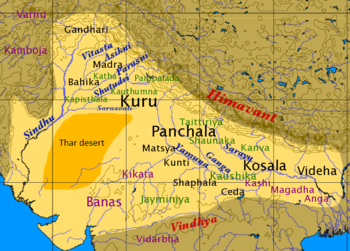Matsya Festival
The Matsya Festival showcases Rajasthani culture and heritage at its best. Attractions include exhibitions, competitions, sports, folk music, songs and dances.
- When: November 25-26, 2014.
- Where: Alwar, Rajasthan.
Matsya Kingdom
| This article may need to be rewritten entirely to comply with Wikipedia'squality standards. (April 2013) |
By the late Vedic period, they ruled a kingdom located south of the Kurus, and west of the Yamuna river which separated it from the kingdom of Panchalas. It roughly corresponded to former state of Jaipur in Rajasthan, and included the whole of Alwar with portions of Bharatpur. The capital of Matsya was at Viratanagara (modern Bairat) which is said to have been named after its founder king Virata. In Pāli literature, the Matsya tribe is usually associated with the Surasena. The western Matsya was the hill tract on the north bank ofChambal.
In early 6th century BCE, Matsya was one the sixteenMahajanapadas (great kingdoms) mentioned in the Buddhisttext Anguttara Nikaya, but its political clout had greatly dwindled and had not much of political importance left by the time of Buddha. The Mahabharata (V.74.16) refers to a King Sahaja, who ruled over both the Chedis and the Matsyas which implicates that Matsya once formed a part of the Chedi Kingdom.
Other than the Matsya kingdom to the south of Kuru Kingdom, which falls in the Alwar, Bharatpur districts of Rajasthan, the epic refers to many other (as many as, six other) Matsya kingdoms. The main Matsyas under Virata had its capital named Viratanagari which is now known as Bairat in Jaipur district of Rajasthan. Upaplavya was another famous city in this kingdom.
The Meenas tribe of Rajasthan, descent from the Matsyas. They used an emblem of a Fish like the Pandyan kingdom(Paravar, Karava, Karaiyar) of the south.[1]



.jpg)

